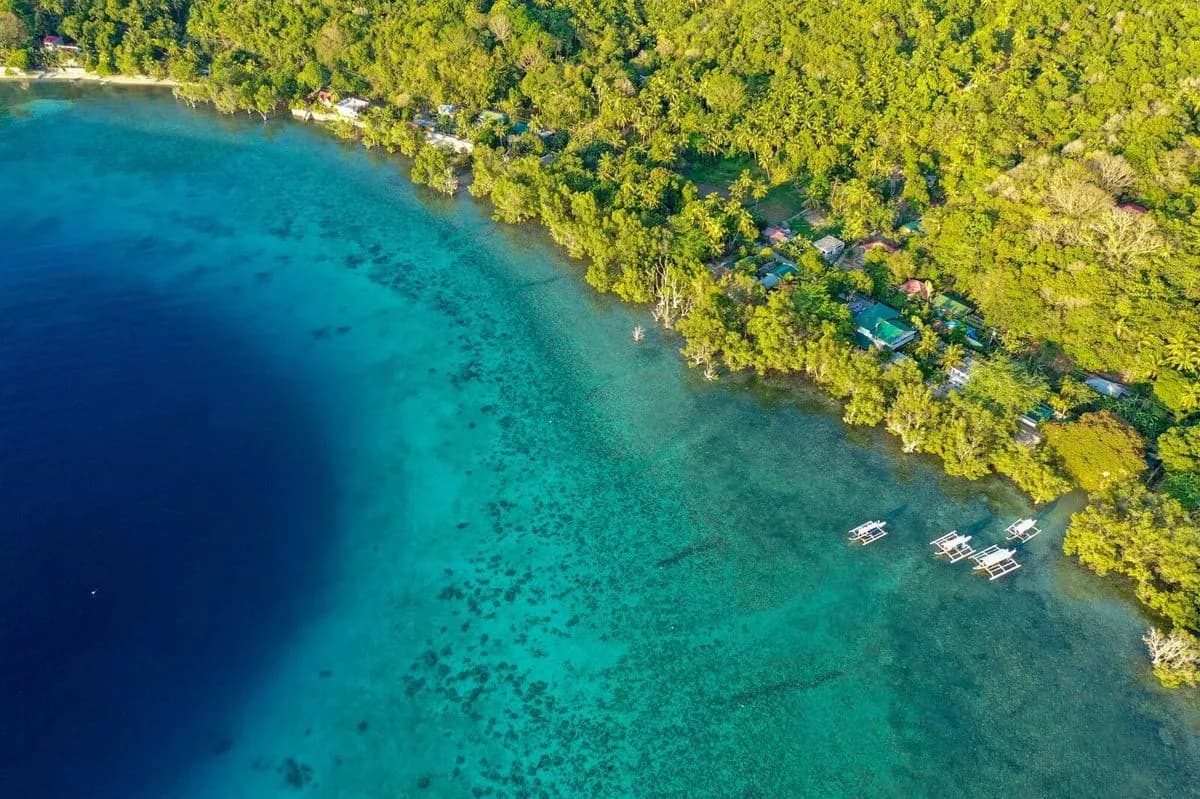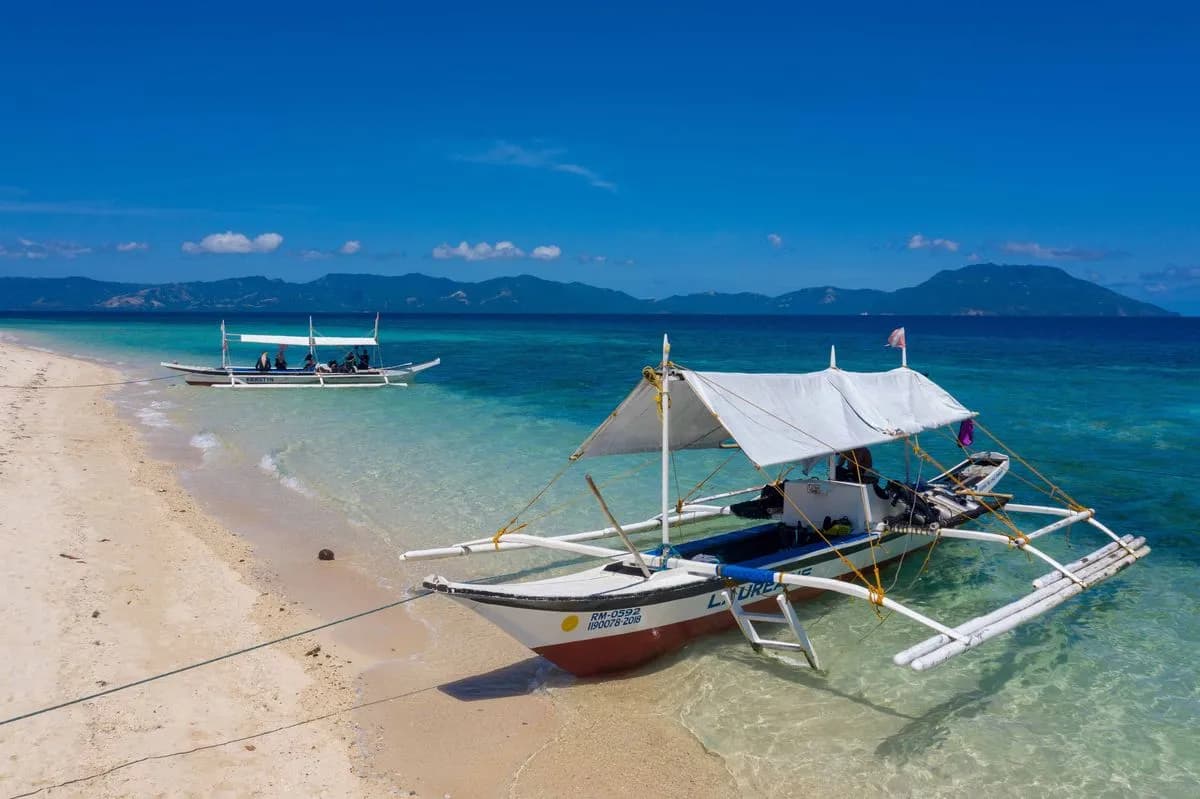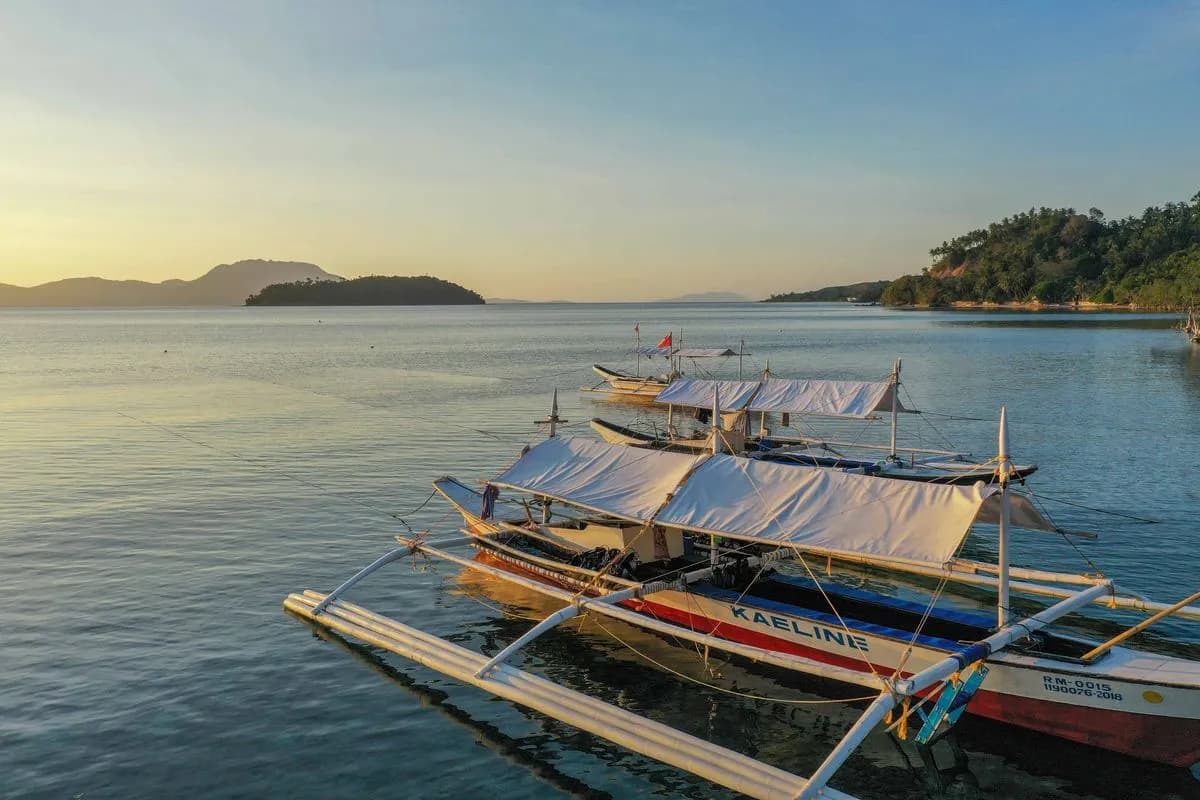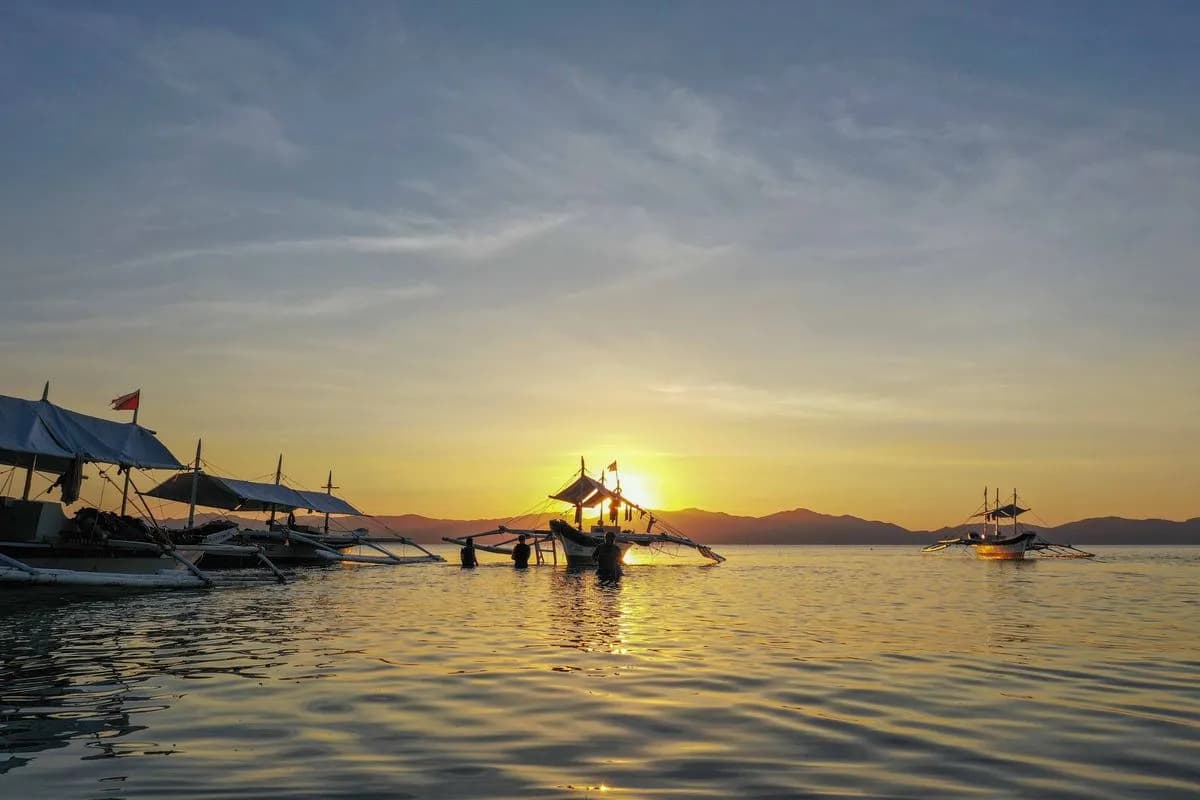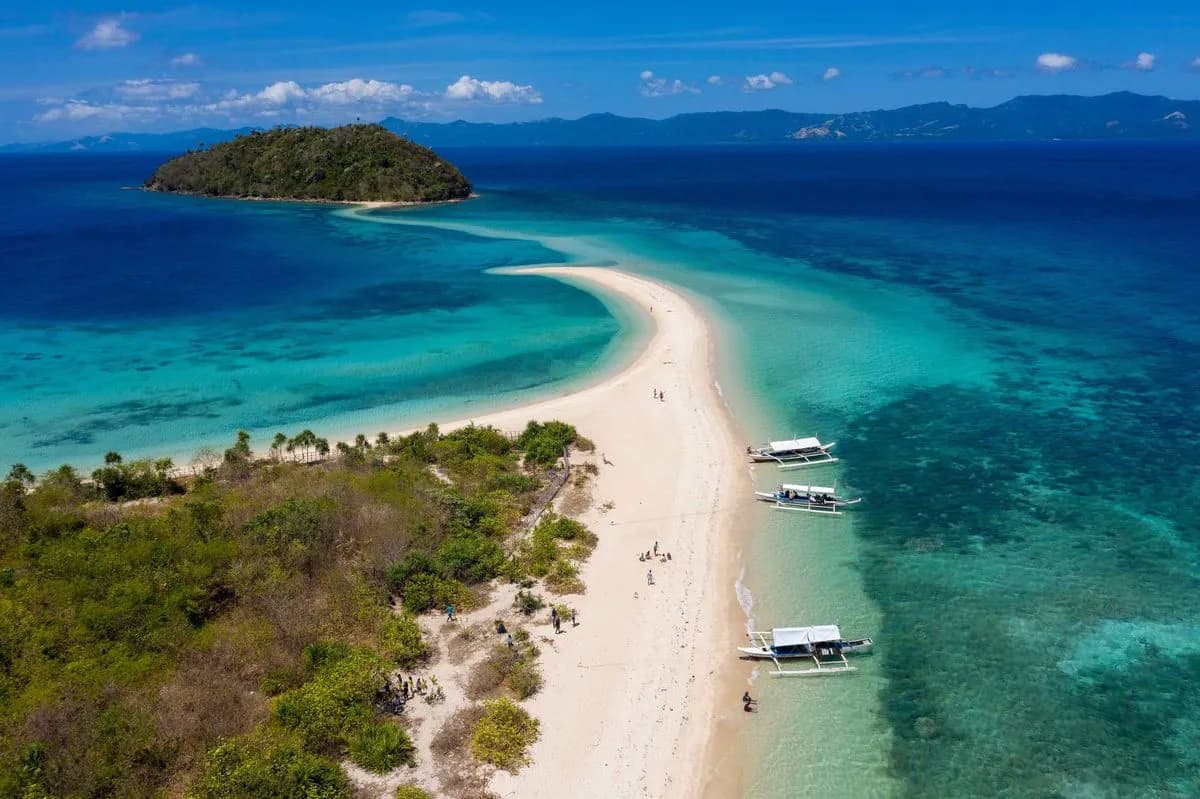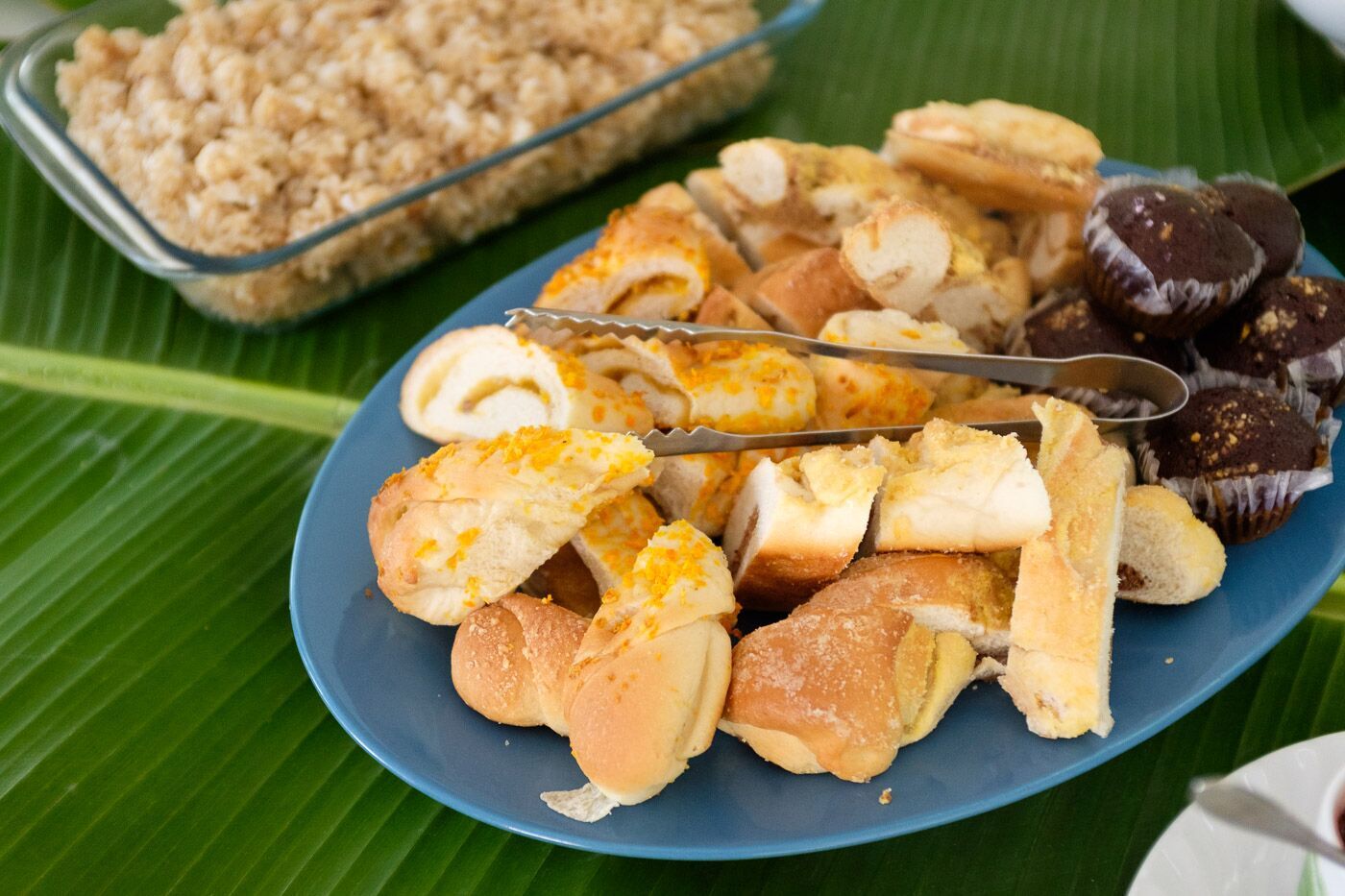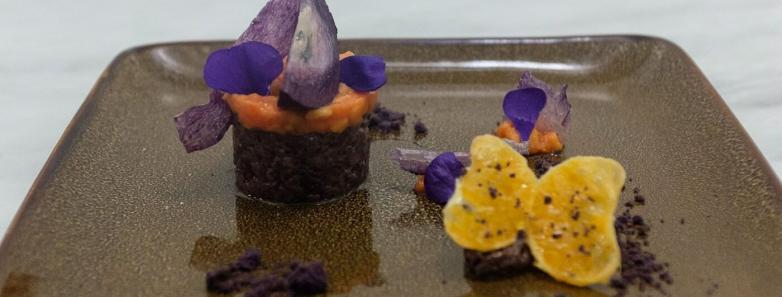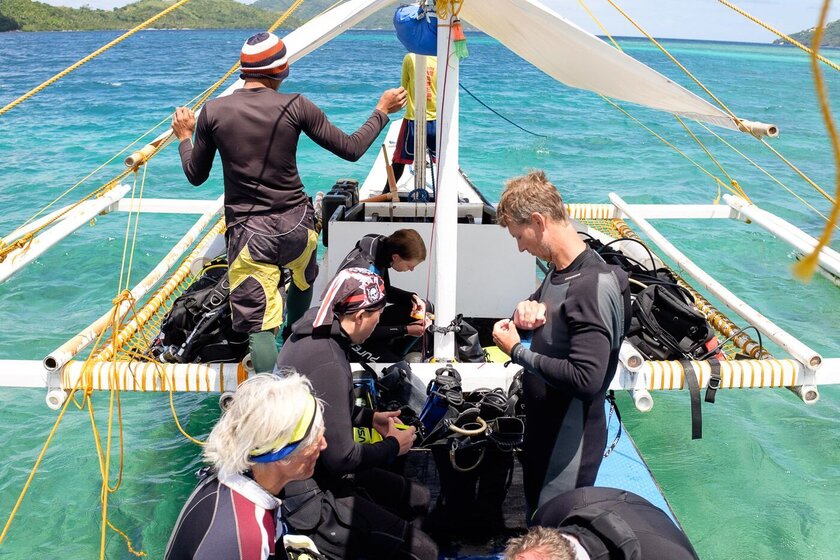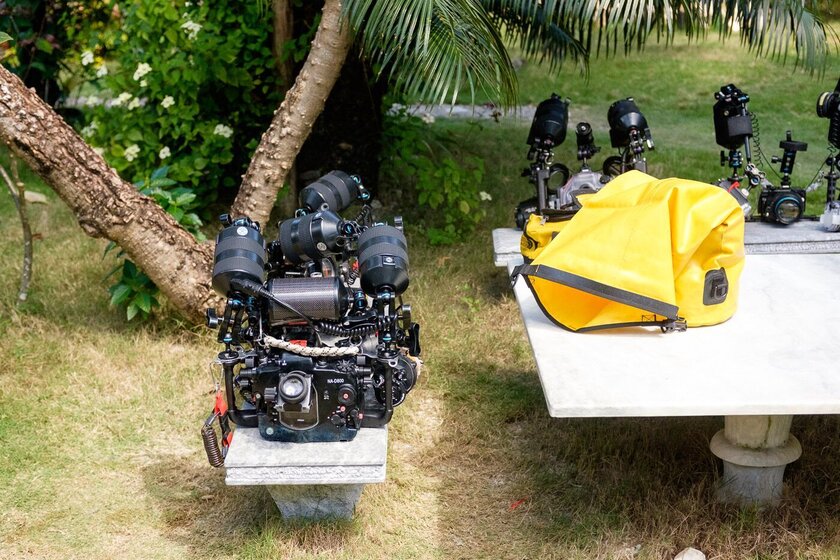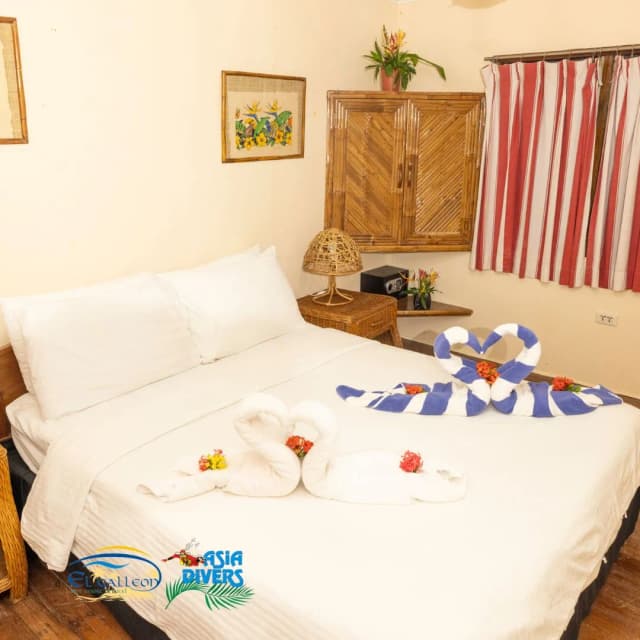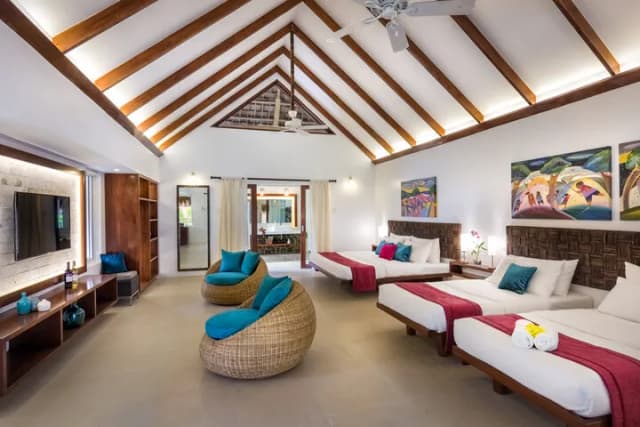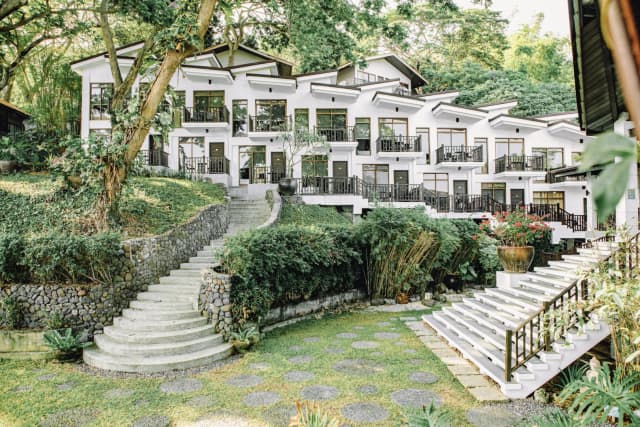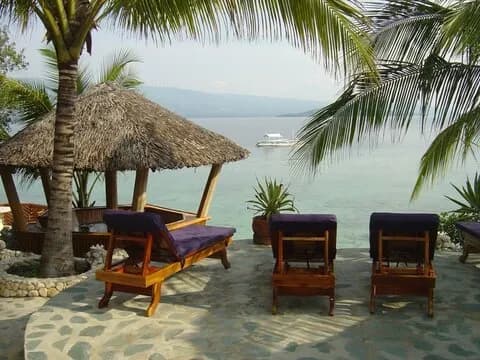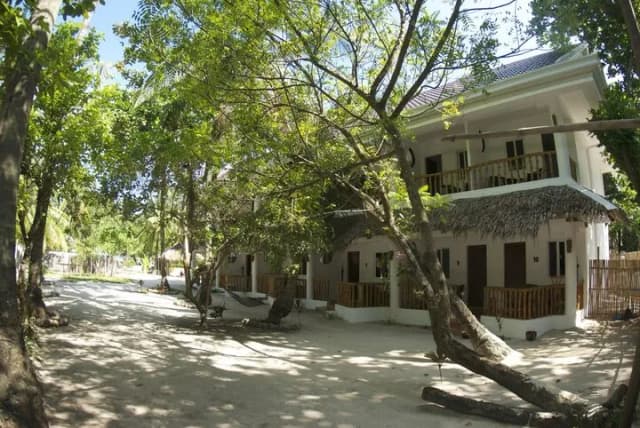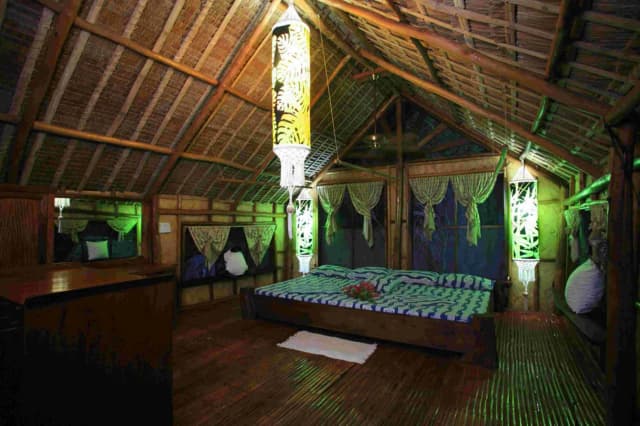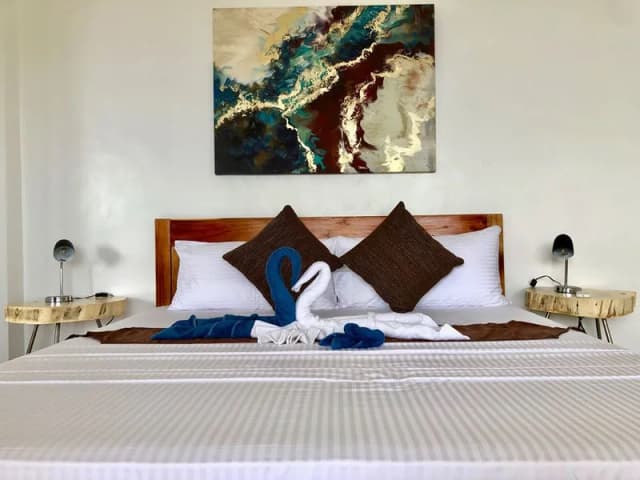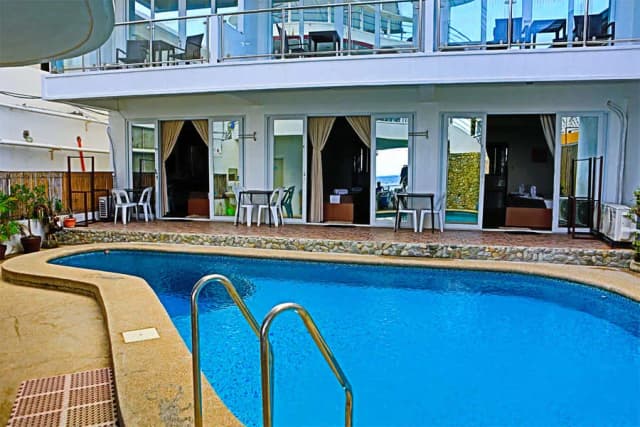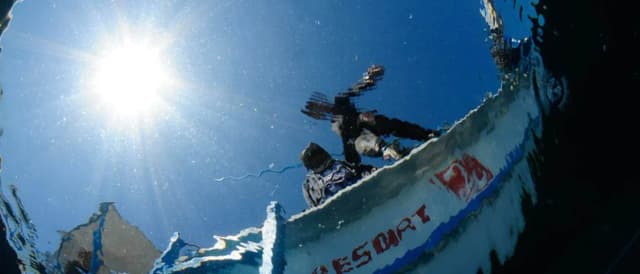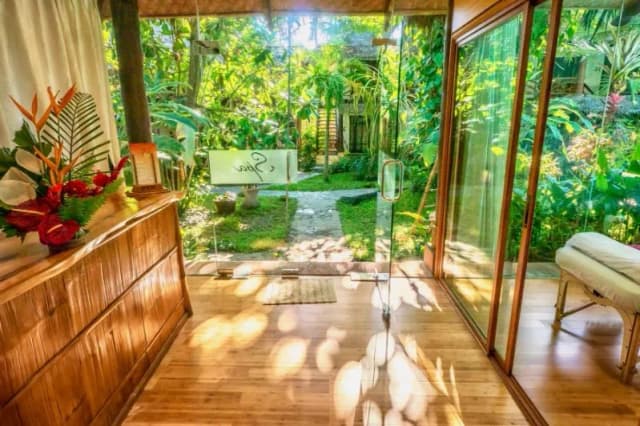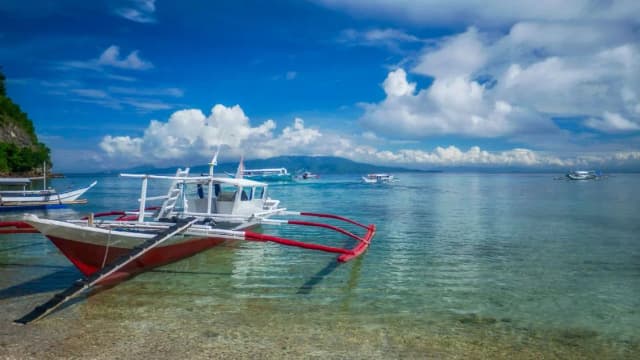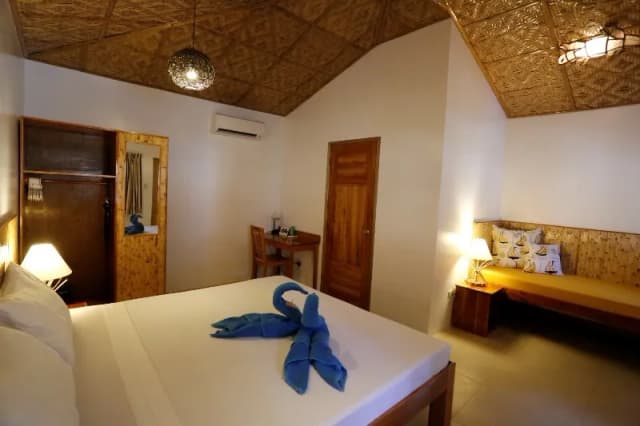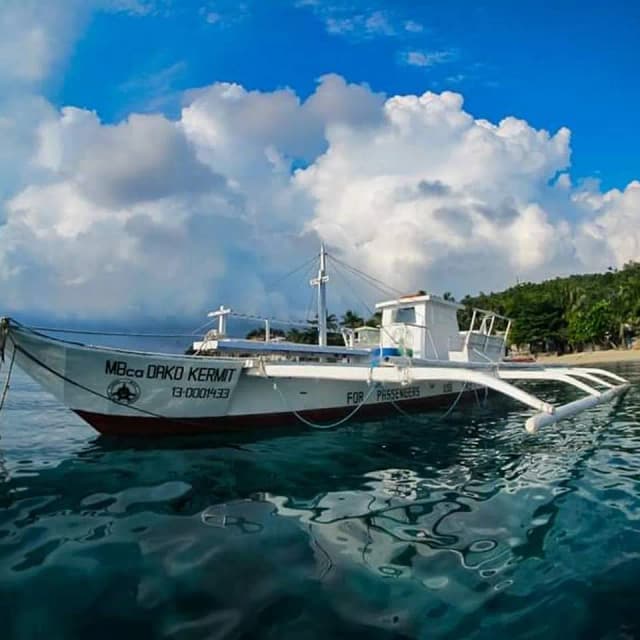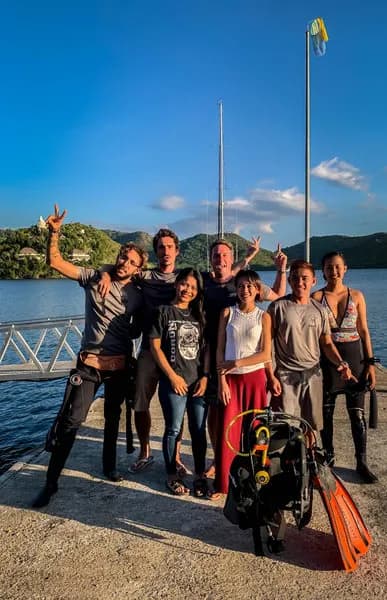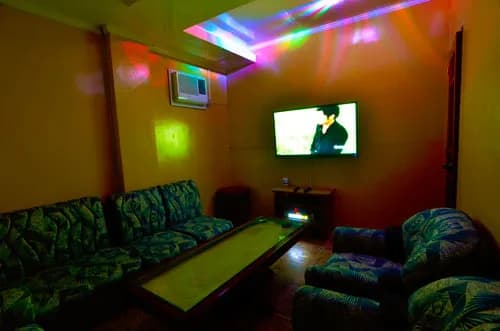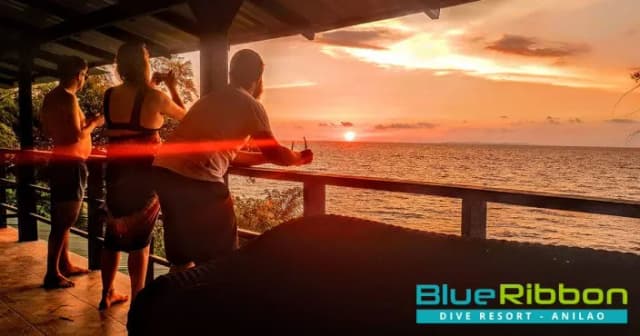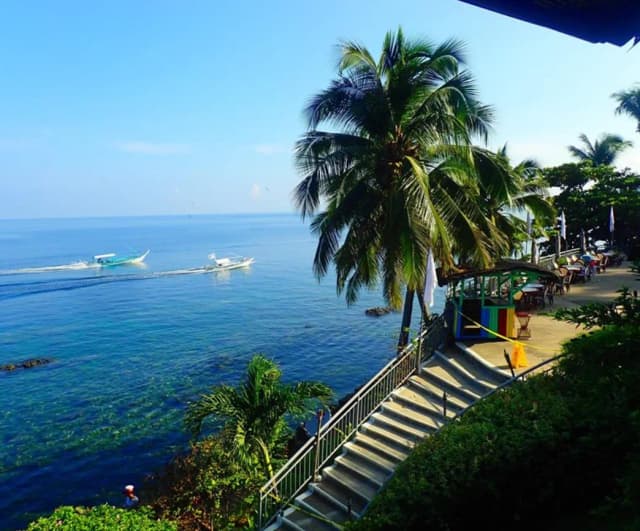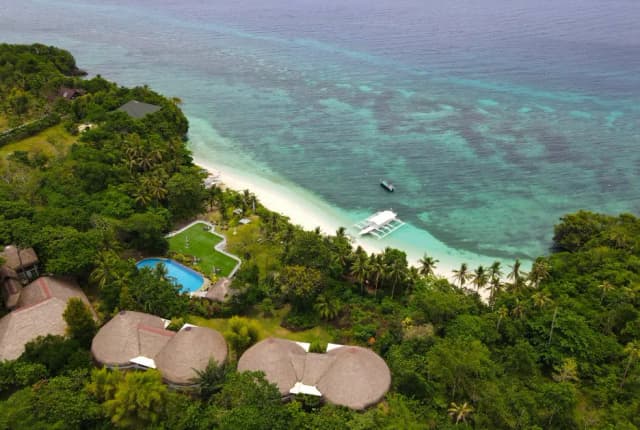The Three P Holiday & Dive Resort and Ducks Diving Romblon
Rooms starts from
$117
per person/per night
About The Three P Holiday & Dive Resort and Ducks Diving Romblon
Romblon Island, Romblon
How To Get There
All transfers (from Manila, Roxas, Kalibo, Boracay, Anilao, Cebu Ormoc, etc.) can be booked through The Three P & Ducks Diving Romblon (except international and domestic flights). They pick up the guests at Manila Airport Ninoy Aquino International Airport or Tablas Airport.It only takes around 2 hours to get to the resort from Tablas Airport.
Dive Overview
Romblon is the perfect dive destination for fans of rare macro and super macro critters, underwater macro, and super macro photographers but also divers, who enjoy scuba diving in untouched dive sites.
Accommodation Overview
The Three P now offers 10 air-conditioned rooms to 15 guests (triple occupancy): 4 Deluxe rooms in the main building (no terrace) and 6 Ocean Front bungalows/rooms (with a private terrace). The Three P also now offers one Standard Room that is located on the first floor and is the same size as the Deluxe room.
Each room has a hot shower, AC, marble floors, a large camera table with a charging area, and a kingsize bed or 2x TwinXL beds. The rooms good for 3 can have 3x TwinXL bed or kingsize bed + 1x TwinXL bed. The room for 4 can have 4x Twin XL bed or Kingsize bed + 2x TwinXL bed. All outlets are good for central European and US-American plugs.
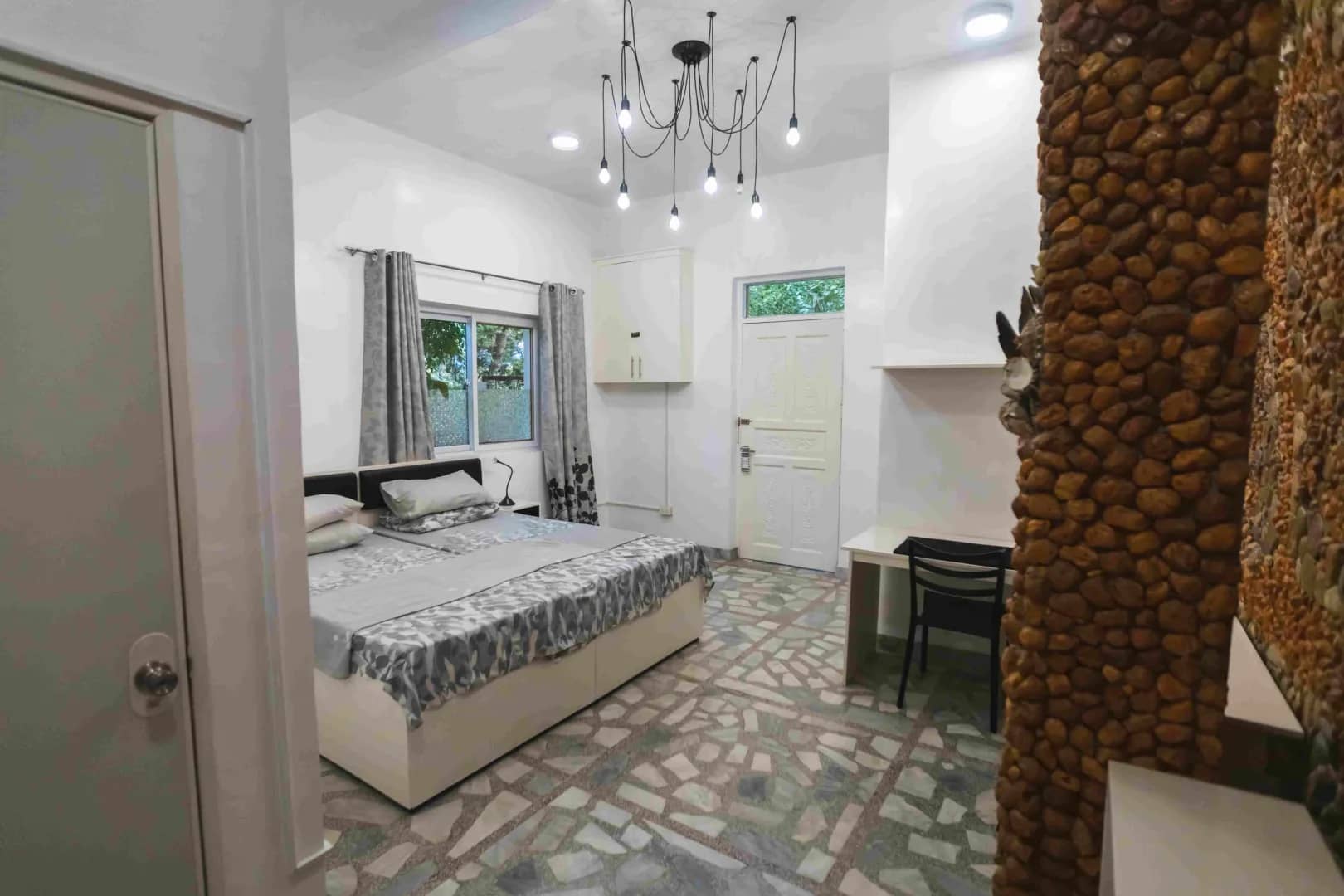
Standard Room
Enjoy a cozy Standard Room equipped with marble flooring, a king-size bed or twin beds, and all the comforts for a perfect stay.
Air Con
En Suite Bathroom
Hot Water Shower
Wifi (free)
from
$117 pp/pn
Room price based on double occupancy
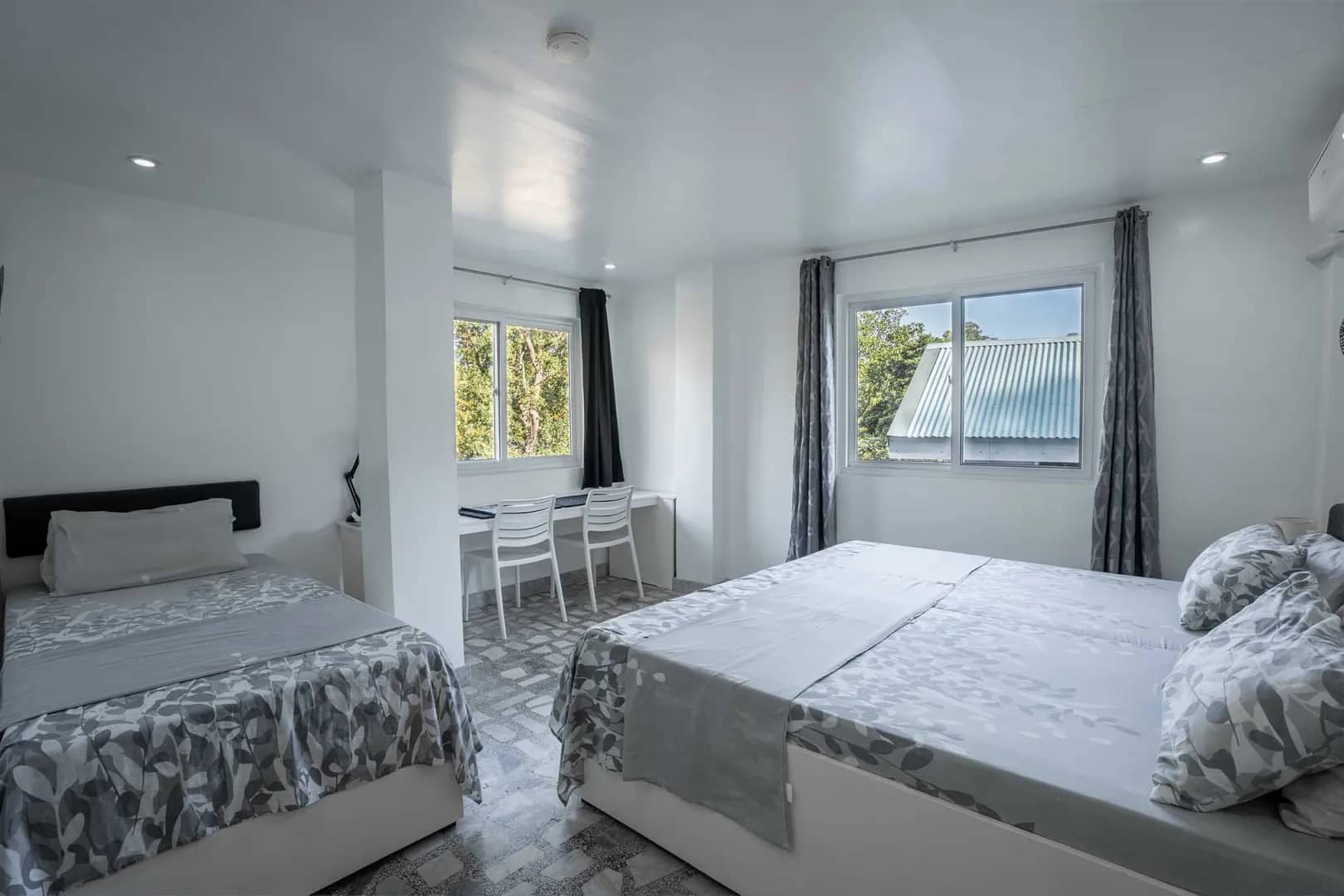
Deluxe Room
Modern air-conditioned rooms with no balcony. Configurable for 2, 3, or 4 guests with king and TwinXL beds—perfect for friends or dive groups.
Air Con
En Suite Bathroom
Hot Water Shower
Wifi (free)
from
$122 pp/pn
Room price based on double occupancy
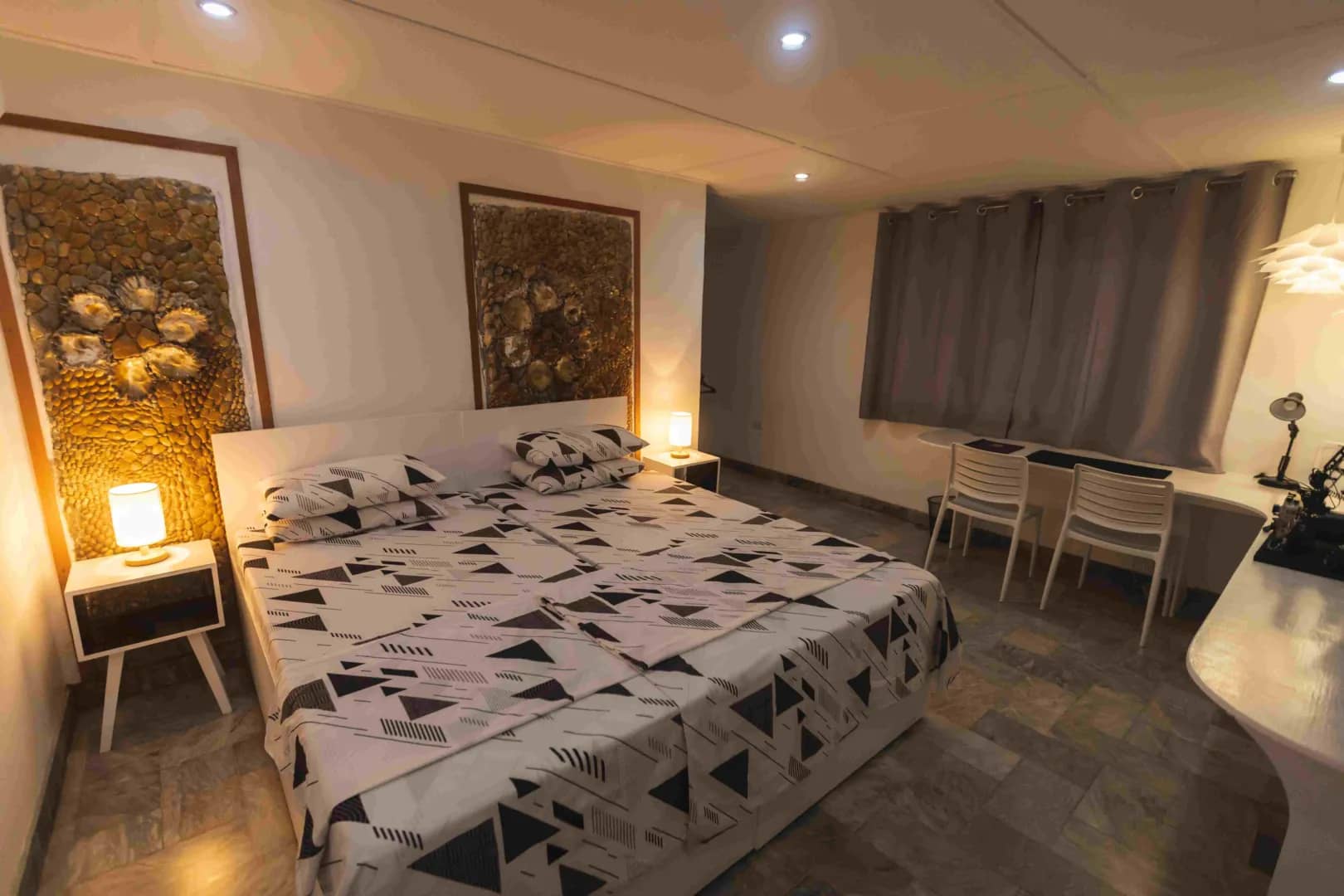
Ocean Front Room
Spacious beachfront rooms with private terrace and sea views. Configurable for 2 or 3 guests with king and TwinXL bed options—ideal for scenic stays.
Air Con
En Suite Bathroom
Hot Water Shower
Wifi (free)
from
$131 pp/pn
Room price based on double occupancy
Food & Drinks
The Three P offers a wider selection of drinks, local and international dishes. They also serve vegetarian meals, half board, and full board.
Dive Information & Itineraries
Romblon Dive Overview
Romblon is the perfect dive destination for fans of rare macro and super macro critters, underwater macro, and super macro photographers but also divers, who enjoy scuba diving in untouched dive sites. Our dive spots in Romblon are highly diverse. From hard coral formations, soft coral gardens, caves, and cliffs with large Gorgonias to sand/muck and colorful shallow water dive sites. In Romblon, fans of rare marine life will have plenty to discover as the Philippines are one of the most diverse areas of marine biodiversity (Heart of the Coral Triangle and Biodiversity Hotspot). Romblon Island is also located at the end of the Verde Island Passage (also dubbed the center of marine biodiversity), which is known to be one of the richest areas when it comes to marine species.
Divers can enjoy various underwater landscapes often without any other divers around and will find in Romblon a serene underwater haven.
Most dive sites are suitable for all levels of experience. We dive in small groups all year round, every day of the week (except Ati-Atihan/Biniray Festival, the first or second Saturday in January). Water temperatures are usually between 26 C and 30C. The sight distance underwater is usually at least 20 meters (65 feet).
Dive Sites At Romblon Island
- The House Reef - The house reef can be entered directly from the beach of the Three P Holiday & Dive Resort. This dive site is characterized by sandy areas, seagrass, and large overgrown blocks.
- You can observe a variety of marine species including rare tiger shrimp, mandarin fish and marble shrimps. This site is also suitable for snorkeling and perfect for night diving. This spot is a great macro and super macro dive site.
- Agnay Fish Sanctuary - This marine sanctuary is located in a sheltered bay near the village Agnay. A large part of the reef is formed by dome-shaped Acropora corals, which give the dive spot its distinctive character. Especially during the early morning hours, you can find lots of different fish including large shoals, eagle rays, and sharks.
- Lonos Marine Sanctuary - This sanctuary is located in a bay near Tiamban Beach in Lonos. It was created especially for the protection of giant clams (Tridacna gigas). You can find some interesting critters here like white Ornate ghost pipefish, spindle cowrie, crustaceans, and lots of nudibranchs.
- The Rope - Here you can find some rare critters like Stiliger sp., Costasiella sp., colorful skeleton shrimp, mimic octopus, velvet fish, and some extraordinary nudibranchs
- Bangug Island - Bangug is a small island in the vicinity of Bonbon Beach. You can find lots of soft corals and overgrown rocks along a steep slope. This dive site is a good location for finding rare Severnsi Pontohi pygmy seahorses as well as several species of Hairy Shrimp and Algae Shrimp (Phycocaris spp.).
- Bonbon Sea Grass Valley - Here you can find a wide seagrass meadow and scattered large blocks covered in corals. Bonbon Sea Grass Valley is a habitat for a variety of very interesting marine species.
- Bonbon Beach - This dive spot meets every divers expectation. Between the many coral species, you can find lots of different marine species. This spot is also well suited for night dives and snorkeling.
- Bonbon Fan Coral Collection - This deep dive site is characterized by fields of very large fan corals. Here you can find very special and interesting fauna like pygmy seahorses, many nudibranch species, colorful cowries, and some rare crustaceans.
- Lunas - At the muddy sediments of these muck dive sites you can discover lots of rare critters like Wunderpus, Flamboyant Cuttlefish, Bluering Octopus, Sawblade shrimps, Bobbit worms, and many more.
- Staghorn Corazon - This dive site is named after the many beautiful staghorn coral formations. Here you will find many different crustaceans, nudibranchs, and coral-associated fish species.
- Treasures Dream - This dive site near the Bay of Romblon is rich in marine species, especially in shallow waters.
- Magnificat - At this spot, you might meet a current that brings you across large gorgonians and colorful stone corals. Here you can spot Denise and Bargibanti Pygmy seahorses, colorful nudibranchs, and beautiful scorpionfish.
- Mapula - At this slope, you can observe sea turtles on a regular base. In the muddy sediments, you can also find some colorful nudibranchs, small frogfish, and many crustaceans. A highlight of this dive site is the Lembeh Sea Dragon (Kyonemichthys rumengani).
- San Pedro Turtle Sanctuary - The wall at the San Pedro Sanctuary is known for its large sea turtles. It is also a habitat of sea snakes, Eagle rays, and swarm fish. The sanctuary is not only suitable for scuba diving but also for snorkeling.
- St. Joseph - Along this exposed cliff you will meet a gentle current and a special coral society, including many species of Zoanthids. Below the wall on a sandy area, there is a large colony of garden eels. You can find big lobsters, rare crustaceans, and lots of nudibranch species here.
- Palje - This dive site can be characterized by its very fine sediment (muck diving). Here you can discover rare critters like the Severnsi and Pontohi pygmy seahorse, lots of nudibranchs, and other marine creatures.
- Agpanabat Fish Sanctuary - This dive spot is characterized by a landscape of high coral towers that are located in between sandy areas. Besides different schooling fish, you can observe a variety of marine life.
- Agpanabat Caves & Canyons Marine Sanctuary - In this place you find a unique landscape of steep walls, overhangs, caves, and gorges. The craggy rock formations make Agpanabat a unique scuba diving experience.
Dive Center Information
The Three P Holiday & Dive Resort Dive Center Overview
The dive center offers individual dive tour planning, boat trips to the coast and dive sites at the nearby islands, macro, and super macro critter spotting, underwater photography assistance, etc. Private guide/spotter and private boats are subject to availability. Standards follow SDI/SSI and PADI guidelines. The nearest decompression chambers are located in Batangas, Cebu, and Manila.
Customize your Stay
Diving, Meals & Extras
Practical information
Electricity
220V
Time zone
UTC+8
Languages
Filipino & English
Accept Credit Cards?
Yes, Visa
